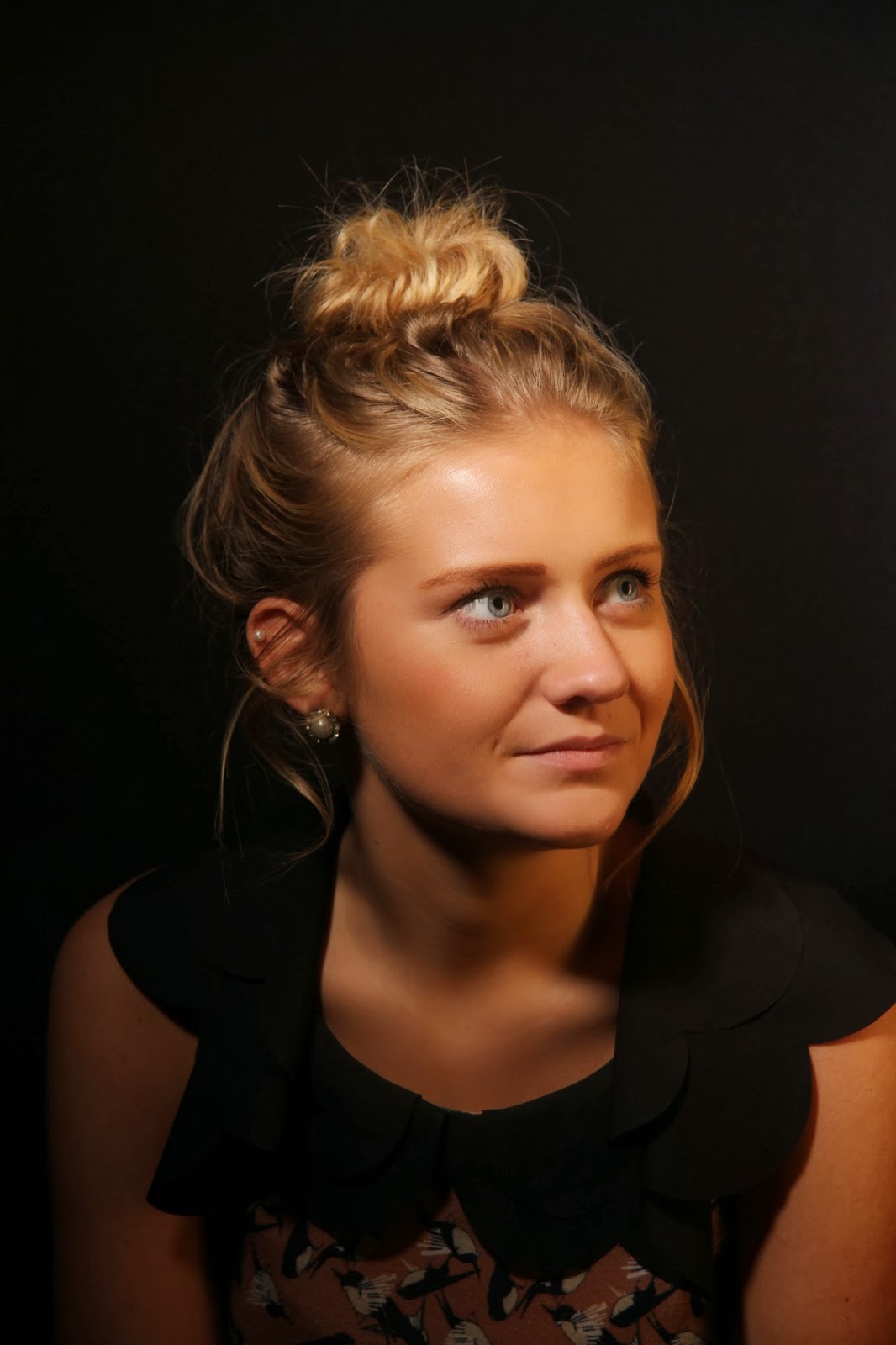Butterfly or Paramount is a type of lighting that first became popular in the 1930's in hollywood films.
This lighting style was and still is used to define the cheekbones and elongate the face. This type of lighting works particularly well with female subjects, but not as much with male subjects as it can make the face too narrow and thin.
This type of lighting can easily be distinguished by the butterfly like shadow that falls below the nose.
This time I chose to use a black background.
Using a canon 7D DSLR, 18-135mm lens, 100 ISO and 1/125 shutter speed I tried to recreate the butterfly lighting technique myself. I used a light meter to determine the f stop on each exposure.
These two images were produced using a honeycomb lighting grid which fitted to the studio light. This grid narrows the beam of light but softens the edges to produce a softly litten photograph.
Aperture f/5.6
The rest of these photographs were taken using a different studio light technique but still producing the butterfly portrait.
Instead of the studio light being shon directly towards the subject, actually the light flashed the light backwards and away from the model into a reflective umbrella which bounces the light back towards the subject.
With this lighting technique a greater volume of light onto and around the subject, which means that the background is also more illuminated.
The rest of these photographs were taken using a different studio light technique but still producing the butterfly portrait.
Instead of the studio light being shon directly towards the subject, actually the light flashed the light backwards and away from the model into a reflective umbrella which bounces the light back towards the subject.
With this lighting technique a greater volume of light onto and around the subject, which means that the background is also more illuminated.
Aperture F/8
Aperture F/8
For this last image I also used a light reflector to bounce the light into some of the shaded areas of the face.
Aperture F/8
The studio set up.



























